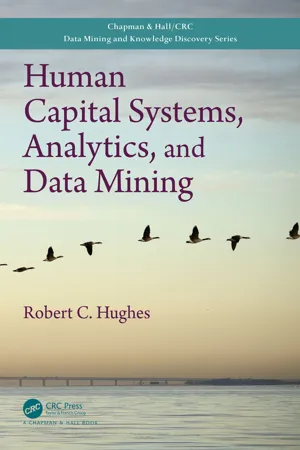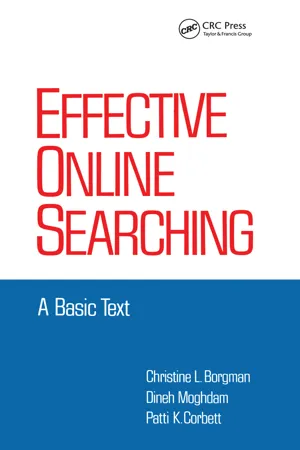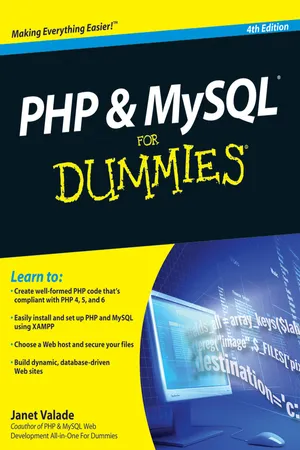SQL Database
An SQL database is a type of database that uses Structured Query Language (SQL) to manage and manipulate data. It provides a structured way to store, retrieve, and manage data in a relational database management system (RDBMS). SQL databases are widely used in computer science for organizing and accessing large volumes of data efficiently.
8 Key excerpts on "SQL Database"
- Robert C. Hughes(Author)
- 2018(Publication Date)
- Chapman and Hall/CRC(Publisher)
...SQL, the common communication language in RDMSs, became a standard of ANSI in 1986 and of the International Organization for Standardization (ISO) in 1987 (International Organization for Standardization 2016). Since then, the standard has gone through many revisions to include an expanding feature group. SQL Language Standards including Data Types are included in the ANSI SQL Standard. Despite the existence of such standards, most SQL code is not completely portable among different RDMS vendors due to their own extensions to the SQL Standard for language components, including Data Types. Data Types have a natural validation effect on Data Base Record activity in that data entered into records cannot violate the Data Type. For example, it is not possible to enter alpha characters into a numeric field. The RDMS engine would automatically reject such an attempt. SQL SQL is the main communication language with RDMSs for creating and managing databases, maintaining databases, and for retrieving information from databases. SQL has three main language components, Data Definition Language (DDL), Data Manipulation Language (DML), and Data Control Language (DCL). DDL DDL is the part of SQL that is used to create and change database structures, including Database Schemas, Tables, Columns, Views, and related objects. Data Design and Modeling Tools such as Oracle SQL Developer Data Modeler provide utilities to automatically generate DDL for deployment of Database Designs directly to a live RDMS Instance. In addition, Data Modeler Systems usually support a number of different Vendor RDMS targets with their own specific DDL variations in terms of SQL grammar and Data Types...
- eBook - ePub
Big Data Computing
A Guide for Business and Technology Managers
- Vivek Kale(Author)
- 2016(Publication Date)
- Chapman and Hall/CRC(Publisher)
...Variations occur both in the expression of the model structures and in the extra features that distinguish a product from its competitors. A database is a self-describing collection of data elements, together with relationships among those elements, that presents a uniform service interface. A database management system (DBMS) is a software product that supports the reliable storage of the database, implements the structures for maintaining relationships and constraints, and offers storage and retrieval services to users. Additional features address other issues, such as simultaneous access, security, backup, and recovery. This implies that the data elements reside in a self-describing structure like a table, which confers meaning on them. A database system isolates the computer-related problems of large-volume data storage and retrieval from application oriented issues. It simplifies software development efforts by providing generic services adaptable to varying applications. It also contributes to the efficiency of many interfacing programs dealing with the same data environment by providing self-describing, consistent data to all users. Moreover, a database system provides a general approach for maintaining relationships among data elements. Database users can be individuals dealing with an interactive interface, or other computer programs requesting services with calls to subprocedures provided by the DBMS. Although some differences distinguish these two modes of service, the DBMS should provide as much uniformity as possible to its users. The user interface module of the DBMS responds to service requests, using the data dictionary to confirm the existence and compatibility of data elements mentioned in the requests. A second module processes storage-retrieval requests, performs optimizations necessary to reduce execution time, and carries out the data operations needed to respond...
- eBook - ePub
Effective Online Searching
A Basic Text
- Christine L. Borgman, Dineh Moghdam, Patti K. Corbett(Authors)
- 2021(Publication Date)
- CRC Press(Publisher)
...6 Databases A thorough knowledge of the structure and content of a database is basic to the training of a search analyst. Yet, it would be impossible to do justice to the topic as a whole without placing stringent limits on the scope of the discussion. Thus, the following points are covered only to the extent that they affect the ability of the search intermediary to conduct an online bibliographic search: the origin of databases and the structure of the industry; types of databases and their relationship with printed indexes; selecting the appropriate databases; the internal makeup and structure of a typical database, including elements of standardization; the relationship between databases and information retrieval systems; and finally, where to turn for more information on a given database. As mentioned in Chapter 1, a database refers to any organized collection of related computer-readable data. In this particular case, emphasis is entirely upon those databases which are searchable through the large, multi-database, commercial information retrieval systems. However, one should not lose sight of the fact that information contained in many such databases has previously been available in a printed format, namely the index. A collection of databases, such as those offered by a search system vendor, is sometimes referred to as a "databank." In a library context, most electronic databases are based on an equivalent printed index but offer greater flexibility and sophistication in the searching process. Computer capabilities can be utilized to take advantage of multiple access points to each entry, and logical relationships can be required among entries to refine a query further. ORIGIN OF DATABASES Although the capability of producing electronic databases coincided with the production of the first computer, the practicality of the venture depended upon the ability to search large volumes of data at a low cost per search...
- eBook - ePub
Information Systems
What Every Business Student Needs to Know, Second Edition
- Efrem G. Mallach(Author)
- 2020(Publication Date)
- CRC Press(Publisher)
...5 Data, Databases, and Database Management Chapter Outline 5.1 The Database Concept 5.2 Operational Databases 5.3 Databases for Decision Making 5.4 Database Management Software 5.5 Database Security Why This Chapter Matters Computers do not make businesses successful. Intelligent use of information helps make businesses successful. Computers are a tool in using information intelligently. Databases are a key technology in making today’s intelligent uses of information practical. To get the information we need when we need it, that information must be properly organized. Proper organization makes it possible to retrieve information efficiently, without a lot of extra work; to control access to information, making it available to those who need it but not to those who shouldn’t have it; and to use this information in new, creative ways. As a businessperson you must be on the lookout for new ways to use information. Knowing how computers organize information will help you do this. Knowing this will also help you work with professional database designers to get the databases you need to do your work. Chapter Take-Aways As you read this chapter, focus on these key concepts to use on the job: 1 Databases help organizations become effective by allowing people and applications to share common organizational information. 2 Most databases today use the relational model. Relational databases are flexible. They can handle applications that were not foreseen when the database was first set up. 3 Applications that involve data analysis and decision making may use other database models. 4 Using databases requires database management software to store and retrieve data on behalf of users and applications. 5.1 The Database Concept A database is an organized collection of data about related real-world items or concepts. At the lowest level data consists of bytes, because bytes are the basic storage unit of computers...
- eBook - ePub
- Janet Valade(Author)
- 2009(Publication Date)
- For Dummies(Publisher)
...Part II MySQL Database In this part. . . This part provides the details of working with a MySQL Database. You find out how to use SQL (Structured Query Language) to communicate with MySQL. In addition, you discover how to create a database, change a database, and move data into and out of a database. Chapter 4 Building the Database In This Chapter Using SQL to make requests to MySQL Creating a new database Adding information to an existing database Looking at information in an existing database Removing information from an existing database A fter completing your database design (see Chapter 3 if you haven’t done this yet), you’re ready to turn it into a working database. In this chapter, you find out how to build a database based on your design — and how to move data into and out of it. The database design names the database and defines the tables that make up the database. To build the database, you must communicate with MySQL, providing the database name and the table structure. Later, you must communicate with MySQL to add data to (or request information from) the database. The language that you use to communicate with MySQL is SQL. In this chapter, I explain how to create SQL queries and use them to build new databases and interact with existing databases. Communicating with MySQL The MySQL server is the manager of your database: It creates new databases. It knows where the databases are stored. It stores and retrieves information, guided by the requests, or queries, that it receives. To make a request that MySQL can understand, you build an SQL query and send it to the MySQL server. (For a more complete description of the MySQL server, see Chapter 1.) The next two sections detail how to do this. Building SQL queries SQL (Structured Query Language) is the computer language that you use to communicate with MySQL. SQL is almost English; it’s made up largely of English words, put together into strings of words that sound similar to English sentences...
- eBook - ePub
- Arthur C. Graesser, John B. Black, Arthur C. Graesser, John B. Black(Authors)
- 2017(Publication Date)
- Routledge(Publisher)
...13 Data Base Querying by Computer Steven P. Shwartz Cognitive Systems Inc. Wendy G. Lehnert Univ. of Massachusetts Amherst The computer-human interface problem is rapidly becoming a critical concern to the data processing industry. Computerized data bases are currently available for a wide spectrum of applications ranging from marketing to law to finance. The computer systems attached to these data bases can, in principle, provide answers to an enormous number of user questions. But in fact, only a small percentage of the potential user population knows how to formulate queries to a data base, i.e., only those with data processing skills. Data Base Querying: A Brief History Natural language processing technology represents an enormous advance in the user-friendliness of computer systems. In the following section, we present a brief history of the development of user-friendly systems in order to put this new technology in perspective. Programming Languages The earliest computer data base query systems required queries written in machine or assembler language. To program in machine or assembler language one needs a knowledge of the physical structure of the data base, a knowledge of programming constructs such as loops, variables, and procedures, and a knowledge of the architecture of the machine on which the data base resides. Such programming skills are present in only a very small percentage of the potential user population for most data bases. The development of high-level languages, such as FORTRAN, reduced the requisite level of programming expertise. A program written in a particular high-level language will run with virtually no modification on a wide variety of different computers. For this reason, high-level programmers do not need to be knowledgeable concerning computer architecture. However, considerable programming skill is still necessary to access a data base using even high-level languages...
- eBook - ePub
- Thomas W. Lauer, Eileen Peacock, Arthur C. Graesser, Thomas W. Lauer, Eileen Peacock, Arthur C. Graesser(Authors)
- 2013(Publication Date)
- Psychology Press(Publisher)
...Individuals are undoubtedly inhibited from asking the right kinds of questions because of the constraints in the structure and content of the database. TECHNIQUES FOR QUERYING SYSTEMS In the first section of this chapter, we review the different types of query methods that have been developed. At one extreme, there are structured query methods that are strict command sequences in which it is necessary for users to memorize complicated commands and the parameters of each command. At the other end of the continuum, there are natural language methods that accept simple English statements. Structured Queries Structured queries are used to elicit information from relational databases. Traditional relational databases consist of objects and specified relations between these objects. For example, users of relational databases may perceive the data as being in tabular form. Users are able to manipulate the data and query the database by using operators that create new tables from the old ones (Date, 1986). One command may be used to pull out a subset of rows from a particular table, whereas another operator may pull out a subset of the columns. Other types of relational databases have roots in artificial intelligence, such as semantic networks (Collins & Loftus, 1975), scripts (Schank & Abelson, 1977), frames (Minsky, 1975), and conceptual graphs (Sowa, 1984). These databases are structured in a fashion that supports rapid, intelligent, and knowledge-intensive retrieval. Rather than being constructed from a set of rows and columns, these databases are structured according to the types of information they contain. For example, information may include taxonomic, causal, descriptive, or goal-oriented knowledge. Each of these types of knowledge is structured in a different way and does not assume the traditional tabular form. There have been at least five major methods for querying traditional relational databases...
- eBook - ePub
GIS for Planning and the Built Environment
An Introduction to Spatial Analysis
- Ed Ferrari, Alasdair Rae(Authors)
- 2019(Publication Date)
- Bloomsbury Academic(Publisher)
...That is why ‘location services’ became the ‘killer app’ driving innovation and growth in mobile platforms. Put simply, GIS extends our abilities to manage and interrogate vast quantities of structured information into the second, third and even fourth dimensions. But these innovations depend on the structuring of data: the concept of a database. The database is itself based on an idea that is as ancient as human civilisation itself: that organised, structured information is more useful than random information. As Heathcote (2003) puts it, ‘a database is a collection of data. … The word database often now refers to data held on a computer but non-computerised databases also exist’ (p. 91). The same information, when stored, classified and ranked, allows it to be quantified and searched much more rapidly than would otherwise be the case. We believe that, all told, a GIS is a database. This chapter aims to show that by thinking of GIS as a database we can better understand how analysis can be performed on spatial data, and how applications can be built that harness the unique power of databases to quickly retrieve information. This is a different way to thinking about GIS than starting with the map – indeed, by thinking of GIS as a database we more usually end up with the map rather than starting with it. That is because maps are essentially collections of objects; maps impose some sort of order and apply rules on a selection of data about things on earth. As this chapter will also show, thinking of GIS as a database helps us to understand how spatial data is treated within computer environments: how software applications deal with the problems of storing and working with information that is geographical in nature. We will seek to define and then extend the commonly used database metaphors that we use in our everyday digital lives: for example, the idea of ‘records’ of things organised into ‘fields’ of information...







